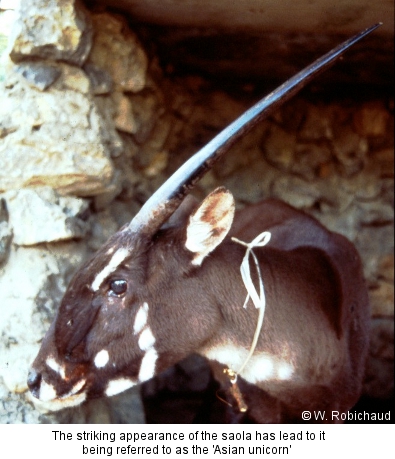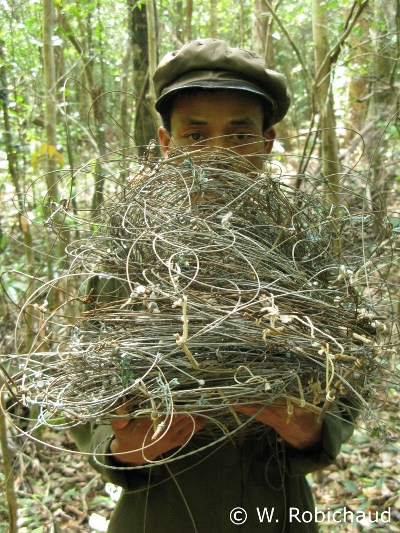
The saola is an antelope-like reclusive species that lives in remote regions of the Annamite mountains on the border of Vietnam and Laos, also known as the ‘Asian Unicorn’ because no scientist has ever seen it in person, and it is one of the top 50 most evolutionarily distinct and globally endangered mammals in the world.
The boom of economies and international business markets during the 1990s and beyond has put enormous pressure on Asia’s natural resources: both plants and wildlife have suffered at the hands of mass agriculture and deforestation, and this added to the elusiveness of the saola makes it appear even rarer than when it was found in 1992. Poaching in the Annamite mountains has also reached epidemic levels, and though the saola is not sought after by hunters, it is still caught in their snares, of which 1,000 can be set up at a time. Now there are probably less than 100 individuals left in the wild.


Two decades on, the ‘Asian Unicorn’ remains as mysterious and elusive as ever, but with better understanding biologists can carry on with their research knowing they are making a difference. In the Saola Nature Reserve in Vietnam’s Thua Thien Hue Province, a new approach to forest guard co-management, supported by WWF, is getting good results. Since February 2011, the newly established team of forest guards patrolling the reserve have removed more than 12,500 snares and almost 200 illegal hunting and logging camps. Conservation initiatives are becoming more focussed and are increasing awareness about the plight of the saola all around the world.
Maybe we should all really think about and appreciate the wonders that Earth still holds, and keep learning about and spreading awareness of endangered species. We should imagine the sense of loss we would feel if all we could show to the next generation were pictures and fossils of animals that used to exist. It’s our responsibility to act now to preserve the Earth’s biodiversity.
- The original 1993 paper on the discovery of the saola in Vietnam